Jan Bartek – AncientPages.com – Italy is a country rich in unique ancient treasures, and there always seems to be something more archaeologists can discover, often in the most unexpected places. During excavations at the thermal baths of San Casciano dei Bagni, near Siena, archaeologists unearthed an incredible 2,300-year-old Roman-Etruscan time capsule that experts have already hailed as one of the most significant finds in the history of the region.
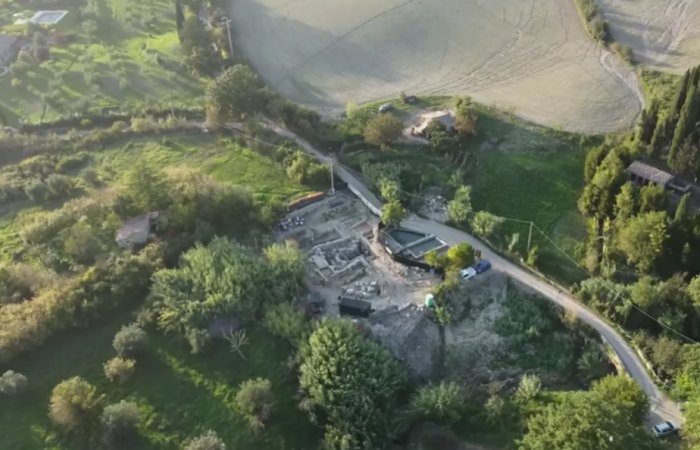
San Casciano dei Bagni, as seen from above. Credit: Ministero Della Cultura
Located 110 km southeast of Florence and 70 km southeast of Siena, Bagno Grande, San Casciano dei Bagni, Tuscany is of great historical and archaeological importance.
Why Was San Casciano dei Bagni Sanctuary Abandoned?
Famous for its numerous springs of sulfurous waters spread throughout its territory, the San Casciano dei Bagni village has long attracted visitors from all over Europe. All the thermal baths in San Casciano dei Bagni have warm sulphuric waters known to cure illnesses and provide relaxation. The Etruscans and Romans used the baths, and their fame increased during the rule of the Medici.
Archaeologists and historians have tried to learn why this sacred place was abandoned, and it seems the answer has its roots in supersтιтious beliefs. Historial records show the thermal baths were struck by lightning around 30 A.D. To ancient Romans, this natural event was a bad omen and a sign sent directly by the gods ordering their followers to leave this place.
Rare Roman And Etruscan Discoveries
Archaeologists have been excavating the thermal baths for some years, but until now, they have also found smaller objects, such as coins. This changed dramatically this year when archaeologists suddenly came across two dozen remarkable, large bronze statues buried in the mud at San Casciano dei Bagni.
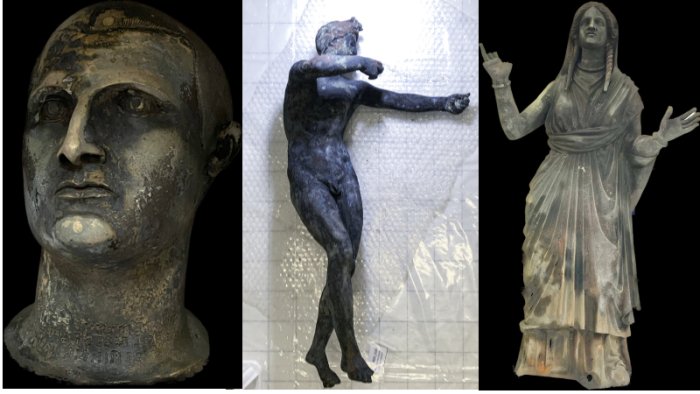
Credit: Ministero Della Cultura
Excavation director Emanuele Mariotti describes the find as “a time capsule waiting to be opened.”
Italy’s Ministry of Culture informed in a press statement that the statues are about 2,300 years old and still in perfect condition! At the site, scientists also found several votive objects and 5,000 gold, silver, and bronze coins. The ancient thermal baths in Tuscany have long been considered special. When wars were waged more than 2,000 years ago, people came to San Casciano dei Bagni. The site was an oasis of peace where people prayed and healed together.
According to experts, the new find rewrites the Etruscan-Roman sanctuary, and over 60 experts worldwide are already working on the discovery.
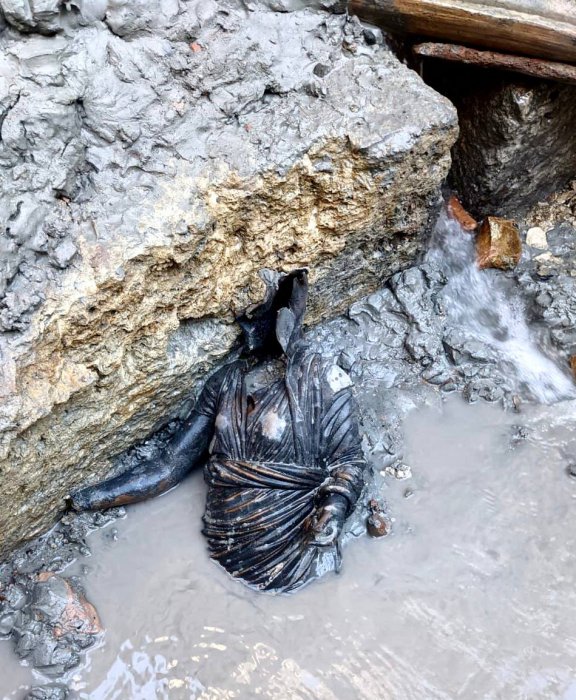
Credit: Ministero Della Cultura
The Tuscany site is the largest deposit of bronze statues from the Etruscan and Roman ages ever discovered in Italy and one of the most significant in the entire Mediterranean. The recent discovery is exceptional because until now, mainly terracotta statues were known from this era.
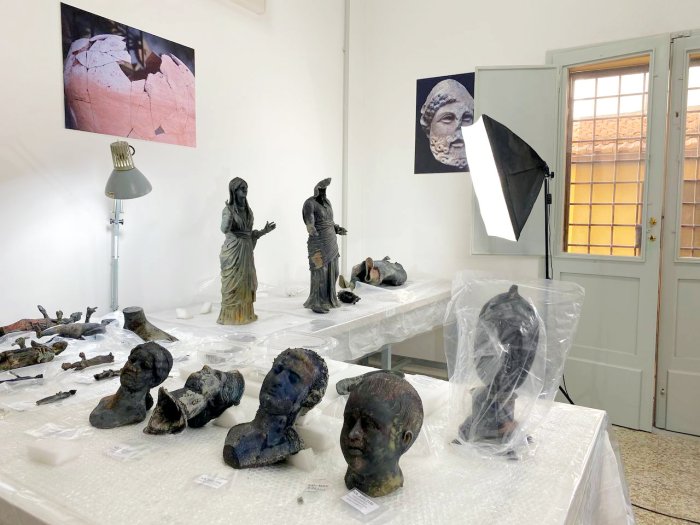
Credit: Ministero Della Cultura
This ancient statues were created during a time of great upheaval in the region. It was “a historical period of important transformations in ancient Tuscany, in the transition between the Etruscans and the Romans,” explained a translated statement from Italy’s Ministry of Culture. It was an era of great conflicts between Rome and the Etruscan cities but also of struggles within the social fabric of the City.
A rare example of bilingual inscriptions, currently examined by Adriano Maggiani and Gian Luca Gregori, shows that despite the conflicts, there was also a growing harmony between the two cultures.
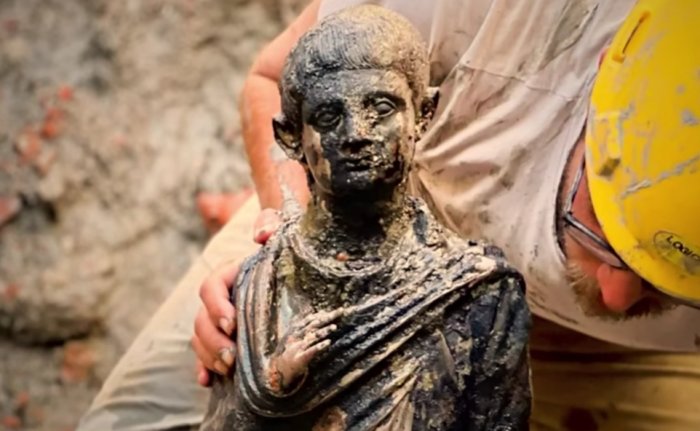
Credit: Ministero Della Cultura
Etruria has around thirty bilingual inscriptions, but most are funerary inscriptions. In this case, the monumental donation has a public character and mentions the sacred and H๏τ source in Etruscan and Latin. This is an extraordinary document that confirms the coexistence of different people at the sanctuary still at the beginning of the 1st century AD, with the need for divinity to be understood by all.
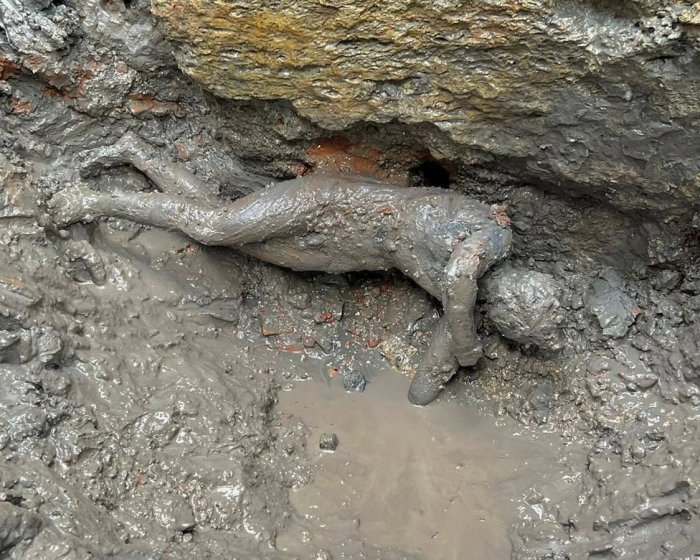
Credit: Ministero Della Cultura
The ancient statues depict Graeco-Roman deities, including Hygieia, goddess of health and hygiene, and Apollo, god of the Sun and healing.
“The exceptional state of conservation of the statues inside the H๏τ spring water has also preserved wonderful inscriptions in Etruscan and Latin. In the inscriptions, we read the names of powerful Etruscan families,” the Italian Ministry of Culture informed.
The 2023 excavation campaign at San Casciano dei Bagni lasted three months and resulted in many new and exceptional discoveries.
See also: More Archaeology News
As previously reported on Ancient Pages, archaeologists have been excavating at the site for a long time, and their work has been rewarding. Among the many finds, one can mention an extraordinary Etruscan and Roman treasure trove unearthed last year. Equally fascinating is the marble life-sized statue of God Apollo found at the site.
The thermal baths at San Casciano dei Bagni are indeed an ancient time capsule that continues to surprise and delight the world of archaeology.
Written by Jan Bartek – AncientPages.com Staff Writer
Copyright © AncientPages.com All rights reserved. This material may not be published, broadcast, rewritten or redistributed in whole or part without the express written permission of AncientPages.com





